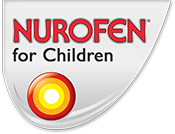Learning about Sprains and Strains

STRAINS AND SPRAINS
Bumps and bruises, cuts and grazes….they’re all a natural part of growing up and most can be treated with a plaster and lots of cuddles. Strains and sprains on the other hand may need some more care.
WHAT IS A STRAIN OR SPRAIN?
A strain is when a muscle or ligament has been overstretched or overused. If the muscle, tendon or ligament is stretched even more severely it is known as a sprain. It’s easy to see how your child could get a strained or sprained muscle when they are running around playing in the garden, climbing over furniture or playing sport.
WHAT’S THE DIFFERENCE BETWEEN STRAINS AND SPRAINS?
Although the pain may feel the same, strains and sprains are different conditions because they affect different structures in the body.
Strains are caused by damage to muscles or tendons (bands of tissue that joins muscle to a bone).Common places for strains include the back, neck, shoulder and legs.
Sprains, on the other hand, are caused by damage to ligaments (strong bands of tissue that hold bones together). Ankles, wrists and knees sprain easily.
HOW SHOULD YOU TREAT A SPRAIN OR STRAIN?

Use the RICE principle immediately after your child suffers a strain or sprain:
• Rest - Get your child to stop moving the part of the body that’s been strained or sprained. Avoid putting weight on an injured area for the first two days.
• Ice - Use some ice to cool the affected area. The cold will help bring down swelling in the early stages. Don’t apply it for more than 20 minutes at a time.
• Compression - Give the injury extra support by compressing the affected area with a bandage. When the injury is wrapped firmly, the pressure can prevent or decrease swelling.
• Elevation - Try to keep the injured area elevated by placing it on a pillow. This helps to reduce swelling.
For longer-term relief, Nurofen for Children can provide temporary relief of pain and reduce inflammation. When used with supervision, Nurofen Heat Patches may also help to soothe your child’s strains by increasing blood flow to the injured areas.
WHEN SHOULD YOU CONTACT A DOCTOR?
Sometimes it’s hard to tell the difference between a sprain and a broken bone, so take your child to see a doctor if you’re not sure.
